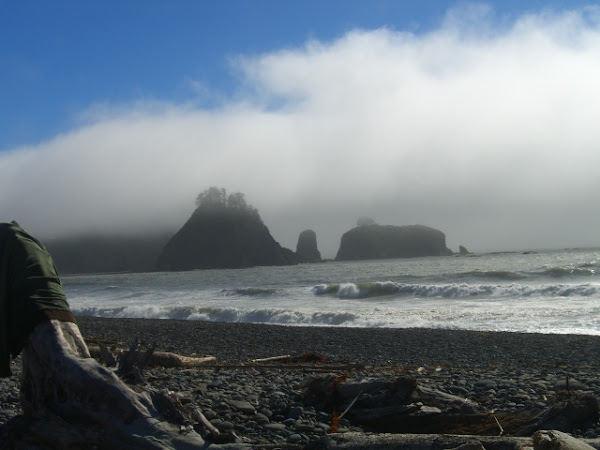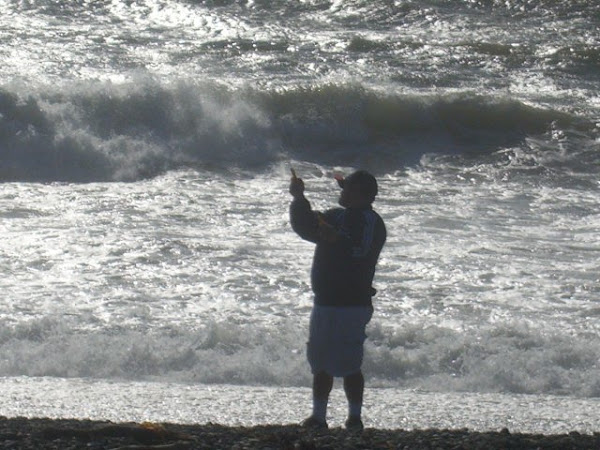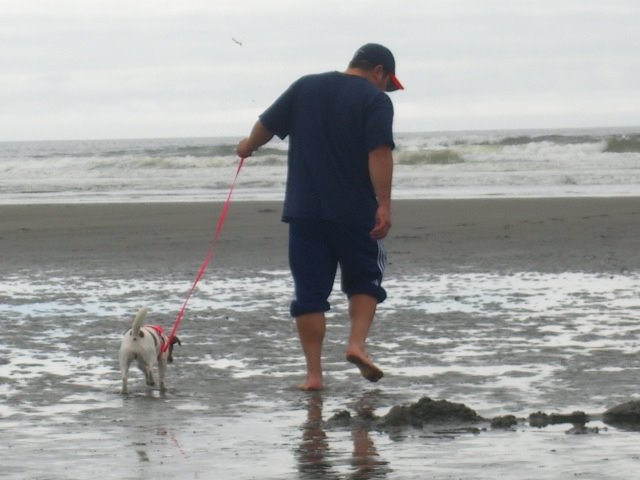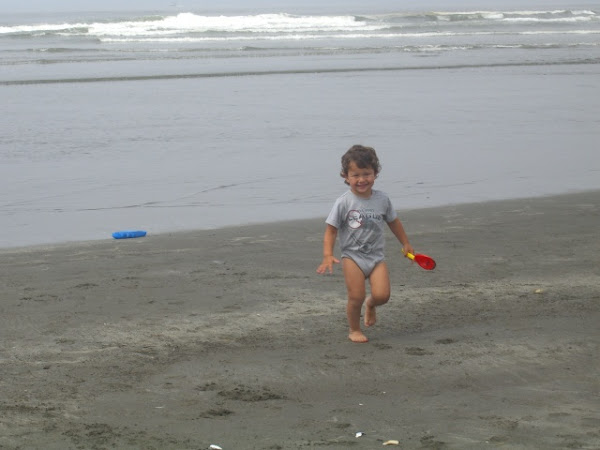 Just in case the 2008 elections, global warming ((or cooling)), toilet bowl economy, job cuts & layoffs, and housing market decline isn't enough to make you all "warm & fuzzy", how about reading this???
Just in case the 2008 elections, global warming ((or cooling)), toilet bowl economy, job cuts & layoffs, and housing market decline isn't enough to make you all "warm & fuzzy", how about reading this???THE SEATTLE TIMES
Wednesday, February 11, 2009
Study: Climate change to have many impacts on Washington State
By DONNA GORDON BLANKINSHIP, Associated Press Writer
SEATTLE — During the next 50 years, climate change will have a dramatic impact on Washington state - snowpack is expected to decrease, water shortages are coming, wildfires could double in size, and more people may die - according to a new report from scientists across the region.
The report from the Climate Impacts Group at the University of Washington paints a bleak picture of the impact of climate change on human health, agriculture, energy supply and demand, streamflow and water storage.
The 2007 Legislature paid for the report being released Wednesday to help policymakers plan for the future. It was inspired by a similar study in California, said Philip Mote, Washington state's climatologist and a researcher at the Climate Impacts Group.
"We have a greater ability to describe and foresee the changes in climate and what they'll mean for the region than ever before," said Mote, who was one of more than 60 scientists - from government agencies, UW, Washington State University, the Pacific Northwest National Laboratory and the University of Idaho - who did the research for this report.
Mote said it was the first time scientists took a closer look at the impact of climate change on Washington agriculture, health, energy and infrastructure. Much of the research is brand new, from work done over the past year and a half, he said.
"It's not all bad and not all immediate," Mote said of the findings. For example, potatoes grow better with higher levels of carbon dioxide and some kinds of winter wheat are expected to have higher yields when temperatures are warmer earlier.
Much of the report does offer a grim picture of the future:
-An increase in annual temperatures of 3.5 degrees Fahrenheit by the 2040s, and 5.9 degrees by the 2080s.
-April 1 snowpack decreased by nearly 30 percent across the state by the 2020s, 40 percent by the 2040s and 65 percent by the 2080s.
-The Yakima Basin reservoir system less likely to supply water to all its users, especially those with junior water rights.
-Rising stream temperatures, which will hurt salmon.
-Forest fires burning double the area by the 2040s and triple by the 2080s.
-Increases in incidents of extreme high precipitation over the next half-century.
-Energy demand for cooling is expected to increase 400 percent by 2040.
-More heat- and air pollution-related deaths throughout the century. Researchers project that by 2025 there could be 101 more deaths among people 45 and older because of heat waves.
Because the UW Climate Impacts Group focuses on adaptation to climate change, not prevention or reversal, the findings of the study won't necessarily lead to expensive new programs, Mote explained.
"In a lot of cases, it doesn't take that much money to incorporate awareness of climate change," he said, offering as an example government agencies planning for sea level rise when they plan projects along Puget Sound.
"Over time, some of this will cost money, but having an awareness of how climate will affect decisions that have a long lifetime is a good starting point," he added.
The public is invited to learn more about the report and talk to scientists involved in the research at an all-day forum Thursday at the Washington State Convention Center.
----
On the Net:
Climate Change Impact Study: http://cses.washington.edu/cig
Climate Forum: http://cses.washington.edu/cig/outreach/waccia/index.html
**********************************************************************************
THE SEATTLE TIMES
Wednesday, February 11, 2009
Report: Climate change to wallop state
By Warren Cornwall
Washington's energy system is in for a double whammy from global warming, as rising demand for power-sucking air conditioners couples with a significant loss of summertime production from the region's hydroelectric dams, according to a new University of Washington study.
The network of dams along Northwest rivers is a linchpin of the region's economy, providing relatively cheap, abundant power that, as a bonus, doesn't emit the greenhouse gases blamed for climate change.
Washington State climatologist Phil MoteBut that system is in for a shock as rising temperatures in the 21st century diminish winter snowpacks that provide water to turn power turbines in summer.
Summer production from the Columbia River hydropower system could drop by 16 percent by the 2040s, according to the new report by the UW's Climate Impacts Group.
Over the same time, demand to run air conditioners could increase in Washington, driven by rising temperatures and population growth, according to the report.
"The losses of capacity are likely to cause a lot of problems," said UW hydrologist Alan Hamlet, who wrote the sections of the report about energy. "It could even be made worse by the summertime increases in load."
Those are just some of the potential problems ahead for the state, according to the report, which represents the most detailed attempt yet to forecast what climate change means for Washington.
The report was funded by the Legislature in 2007.
Among other major impacts, the study predicts:
• Bigger forest fires, fueled by drier, hotter conditions. The amount of acreage burned in Idaho, Eastern Washington, Eastern Oregon and Western Montana could more than double by 2040, from an average 425,000 acres a year to as much as 1.1 million acres.
• More heat-related deaths. An extra 101 people over age 45 could die in the Greater Seattle area each year by 2025 because of more intense heat waves. Dozens more could die from increased low-lying ozone, an air pollutant triggered by hot, sunny weather.
• Struggling salmon runs. Many Eastern Washington rivers could heat to temperatures fatal to salmon in the summer, while Western Washington rivers could become warm enough to further stress the fish. Increased winter floods could also damage salmon eggs.
• More drought in the Yakima Valley. The number of years when irrigators there run short of water could more than double by the 2020s, to 32 percent, and rise as high as 77 percent by the 2080s.
There are, however, some potential winners.
Some crops, notably winter wheat, could get a boost of as much as 24 percent by the 2040s from milder winters and more carbon dioxide — a common greenhouse gas that acts as a fertilizer for plants. Warmer winters could dampen demand for energy to run furnaces.
Past climate reports have predicted some of the same impacts to the state, but none has been as comprehensive, said UW researcher and Washington State Climatologist Phil Mote, who worked on the study.
The analysis was based primarily on computer models used to forecast how the globe's climate is likely to change in the future as greenhouse gases trap heat close to the Earth's surface.
These models predict a 3.5-degree Fahrenheit rise in average annual temperatures by the 2040s and 5.9 degrees by the 2080s, compared with average temperatures from 1970 to 1999.
The report comes as Gov. Chris Gregoire lobbies the Legislature to create new regulations forcing Washington industries to cut greenhouse-gas emissions.
The proposal has met with strong opposition from business groups and some lawmakers, who warn it could hurt industries struggling in the recession.
The prospect of a loss in hydropower already has caught the attention of the region's electricity experts and utilities.
It raises a major question of how to replace that lost power, at a time when fossil-fuel power plants are frowned on for their greenhouse-gas emissions, and new multibillion-dollar dams face steep political and financial obstacles, said John Harrison, spokesman for the Northwest Power Planning Council, a federal agency that plans for the region's future energy needs.
"We're looking into creative solutions, but there isn't any magic solution at the moment," he said.





















No comments:
Post a Comment